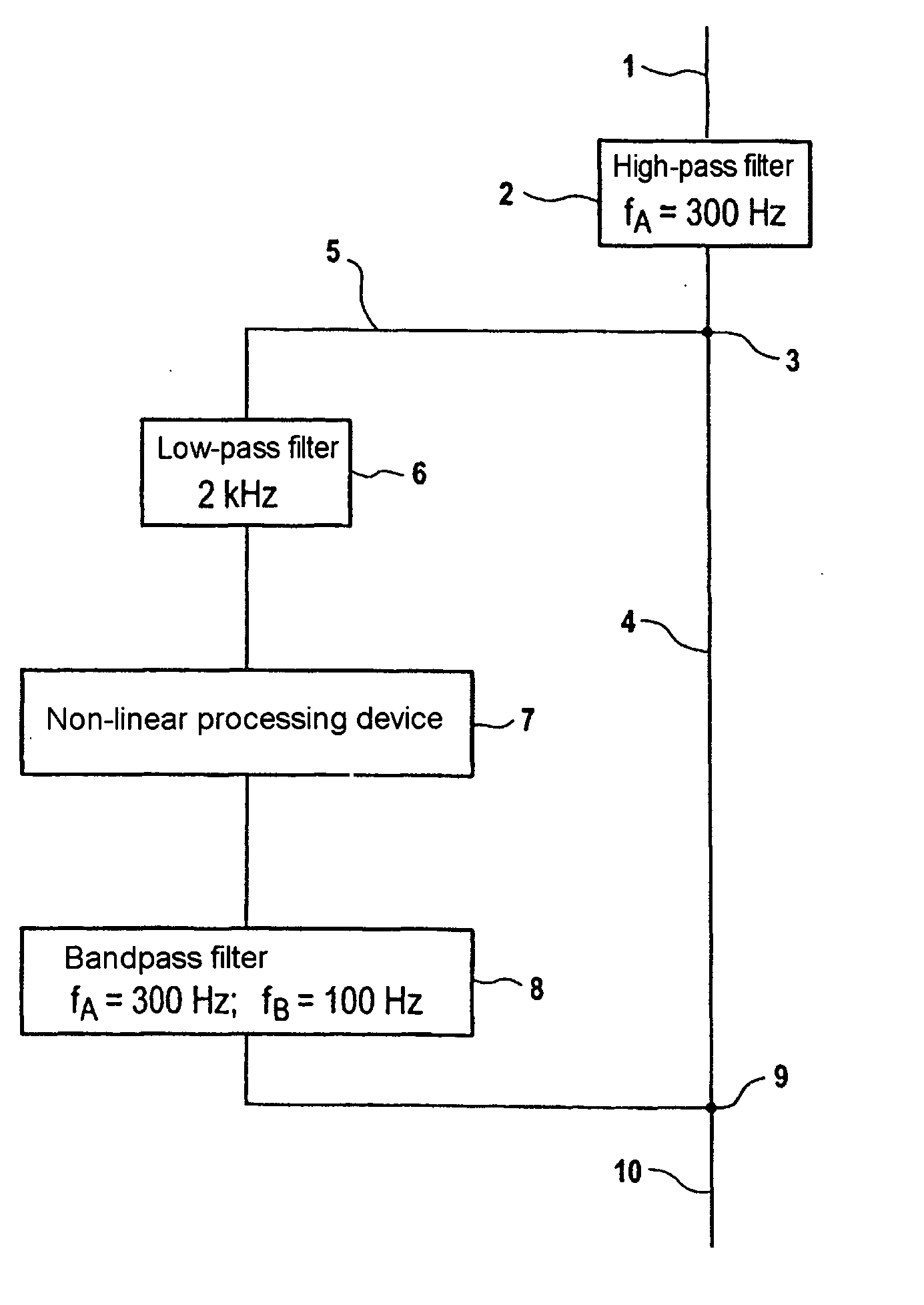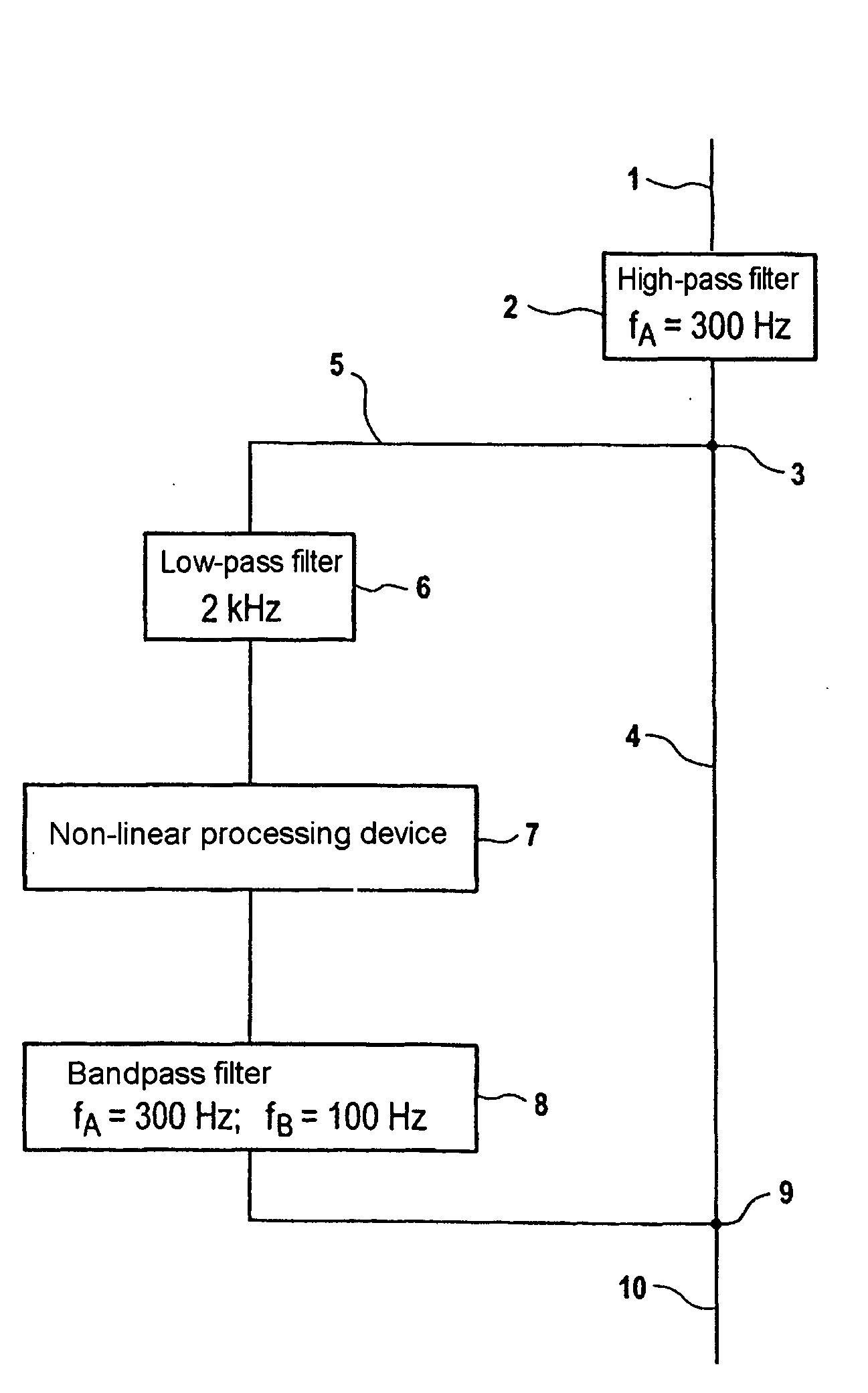Method and device for the interference elimination of a redundant acoustic signal
a technology of interference elimination and acoustic signal, which is applied in the direction of sound producing devices, electrical transducers, instruments, etc., can solve the problems of not being able to use with all types of acoustic reproduction devices, removing interference from speech signals, and being more sensitive to wind and breathing nois
- Summary
- Abstract
- Description
- Claims
- Application Information
AI Technical Summary
Benefits of technology
Problems solved by technology
Method used
Image
Examples
Embodiment Construction
[0034]FIG. 1 shows a method procedure and components required for carrying out the method in order to improve the sound of a redundant acoustic input signal 1 that is subject to interference, such as a speech signal. Speech signals have the intrinsic feature that the frequency spectrum that is present at any specific time is not all required to make a statement on what sound should be associated with the current frequency spectrum. To this extent, speech signals are redundant; that is, some of the frequency spectrum can be dispensed with, particularly without any loss of information about the overall frequency spectrum. Such concept is based on the fact that the frequency spectrum element which has been dispensed with can be deduced from the retained frequency spectrum.
[0035] In detail and as can be seen in FIG. 1, the input signal 1 (after it has been received by a receiving module, for example, a mobile telephone or hearing aid) is passed to a spectral high-pass filter 2 which ha...
PUM
 Login to View More
Login to View More Abstract
Description
Claims
Application Information
 Login to View More
Login to View More - R&D
- Intellectual Property
- Life Sciences
- Materials
- Tech Scout
- Unparalleled Data Quality
- Higher Quality Content
- 60% Fewer Hallucinations
Browse by: Latest US Patents, China's latest patents, Technical Efficacy Thesaurus, Application Domain, Technology Topic, Popular Technical Reports.
© 2025 PatSnap. All rights reserved.Legal|Privacy policy|Modern Slavery Act Transparency Statement|Sitemap|About US| Contact US: help@patsnap.com


